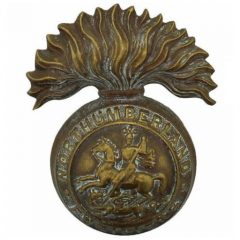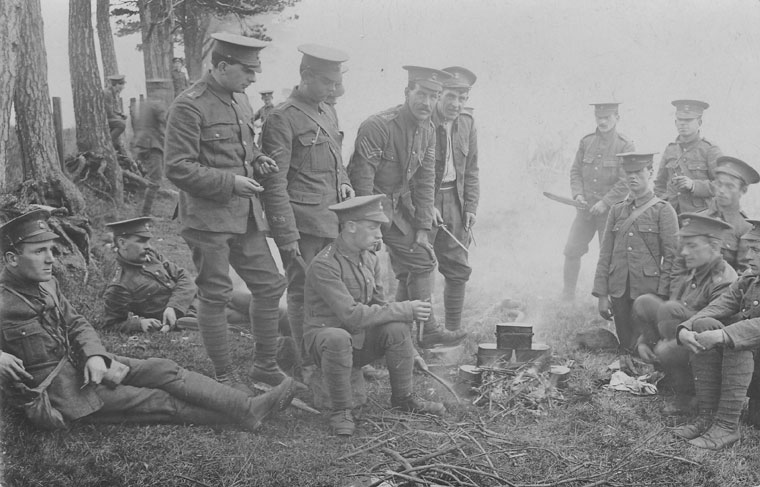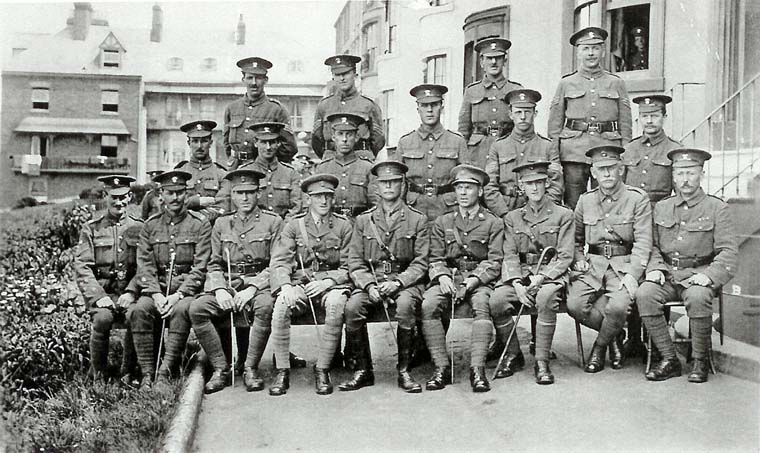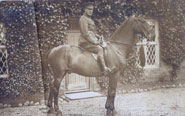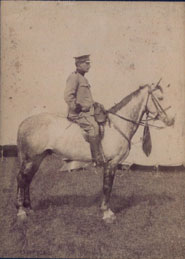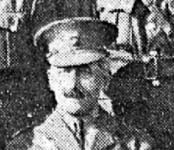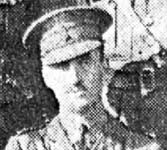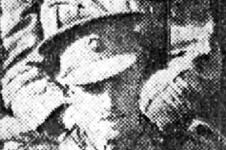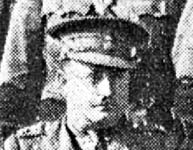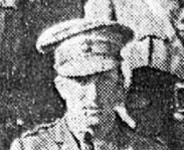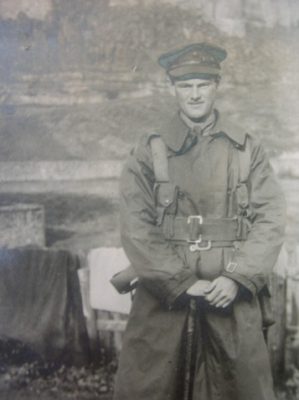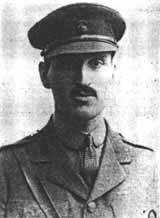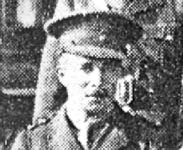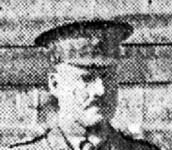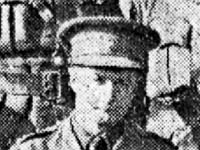Summary of events
Monday, 24th May 1915
It was on this day that the battle now known as Bellewarde Wood began. Around 2am the Germans opened with a gas attack between Hooge1 and Turco Farm 2backed up by a very heavy artillery bombardment. The wind was favourable for such an gas attack, so many officers in the front line were on the alert and the Germans lost the element of surprise. Nevertheless, the troops had little time in which to fit and adjust their primitive respirators before the gas cloud enveloped them. The German infantry assault immediately followed the gas, but in only one part of the line near Mouse Trap Farm3 did they succeed in overrunning the British position.
At the time of the attack the 4th Bn was occupying dugouts near the Chateau des Trois Tours, Brielen4. The CO (Col Foster) of the 4th Bn, awakened by the noise, was already dressing when an orderly arrived with orders for the Bn to be ready to move at a moments notice. This was quickly followed by another orderly and another message which requested Col Foster to report to General Hull (OC 10th Bde) at No2 pontoon bridge5. Col Foster, accompanied by his Adjutant (Capt Cruddas), set off across the fields in the direction of the bridge having left orders for Major Gibson to follow on with the battalion immediately.
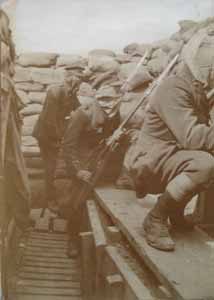 'We moved off about 5am, there having been no time for breakfast and most of us had to go with our water bottles empty, as the water carts were not up, and the water at the farm near at hand had been condemned' [zotpressInText item="{6C9UZ7VX}"].
'We moved off about 5am, there having been no time for breakfast and most of us had to go with our water bottles empty, as the water carts were not up, and the water at the farm near at hand had been condemned' [zotpressInText item="{6C9UZ7VX}"].
As the Colonel and Capt Cruddas walked north east towards the canal the smell and effects of poison gas grew stronger. By the time they reached 10th Bde HQs6 near the canal, the gas was quite dense even though they were nearly three miles from where the Germans had released it.
General Hull gave instructions for the 4th Bn to be held in reserve on the canal bank and await further orders. It was not long before the Bn came into sight marching along the road from Brielen. The Seaforths, who had been occupying dugouts on the canal bank, moved forward to make space for them and left a very welcome supply of food and water behind. The density of gas in the canal cutting by this time was quite bad, so Col Foster ordered his men to lie just below the top of the bank. They were more exposed to exploding shells, but the CO considered it the lesser of two evils. The heavy shelling continued until approximately 7.30am.
At 10am orders were received to move to the 2nd Divn line west of the St Jean7 - Wieltje8 road. To try and minimise casualties the Bn crossed the fields in single file and entered a deep ditch on one side of the road. Although they all wore their respirators the gas was affecting many in the Bn.
This line was full of troops so the Bn advanced again to the support line at View Farm9. , 'A' & 'D' Coys, under a shower of shells, then recrossed the road and advanced to some trenches near Hill Top Farm10. Capt Robinson, already half blinded by the gas, stumbled into a shell hole and sprained his ankle. Lt Bunbury assumed command of 'A' Coy, but it was not long before he was hit in the foot by a machine gun bullet and had to hand command of the Coy to Lt Turner.
Gas shells were falling around the fusiliers, so at some stage during the afternoon half of 'B' and 'C' Coys were moved out of their trenches and west along the road. Orders were then received to send a Coy to Mouse Trap Farm, a short distance to the north east of the Bn position, to assist the Dublins. The OC of the 1st Bn Warwickshire Regt stopped 'C' Coy stating that the Germans had already driven the Dublins out and captured the farm. 'C' Coy returned during the afternoon with remnants of the 7th Bn and East Lancashires.
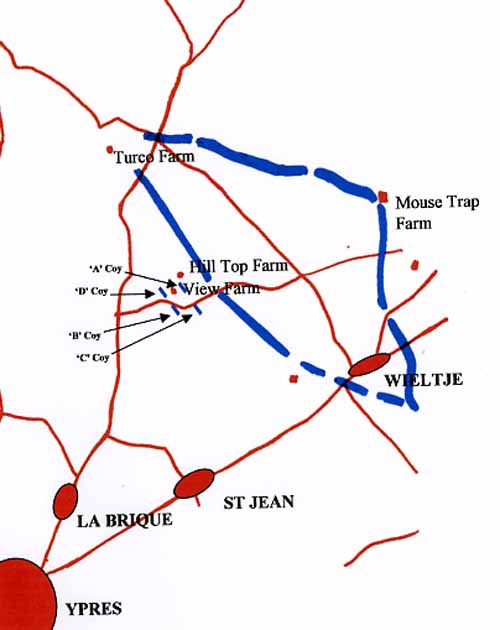
At 6pm Col Foster received a service instruction sheet from the OC Warwickshires:
"As soon as it is dusk, please send two Companies into the support lines to prolong the line now held by the Seaforth Highlanders. Also please be in command of the line for the present during my absence, at the telephone in a house which will be shown you on arrival here".
The Bn was then ordered to support a counter-attack by the Somersets and Monmouths set for 10pm. However, this was countermanded because the Germans captured an orderly carrying a message to the Dublin Fusiliers referring to the attack. By this time gas shells were falling heavy and one burst in the trench, killing one man and wounding another. Although the gas was painful to the eyes, no further harm was done. Half of 'B' and 'C' Coys were moved west along the road to avoid the shelling.
In compliance with the Service Instruction issued earlier, B' Company moved forward at dusk to the first line trench to the east of the St Jean-Wieltje road and 200 yards south of Wieltje village, 'A' & half of 'C' Company occupied a trench on the left flank between the road and the Seaforths position . Half of 'D' Coy were placed in support behind them, west of road. The other half of 'C' Coy were placed behind them (map 2). The other half of 'D Coy had been missing since the morning.
At 11.30pm an Orderly arrived with instructions for all available men to be redeployed to the right of the roadway, and for Col Foster to report to General Hull in the village of St Jean. It was a bright moonlit night and the German machine guns were very active, so Col Foster had a lively walk back, guided by the Orderly. Col Poole of the Warwicks was there when he arrived. Col Foster was instructed to dig in to the right of the road and as far east as a small clump of trees. He was also instructed "to stick it at all costs".
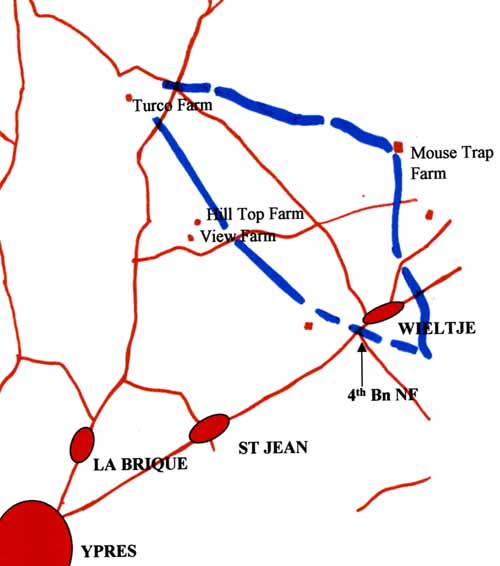
Tuesday, 25th May 1915
Col Foster returned to the Bn positions in the support trench to discover that only 'B' Coy were still there. Lts Bradley and Cranage were dispatched to try and locate the missing half of 'D' Coy. Bradley returned to report that they had been commandeered by another Brigadier, attached to the East Lancashires11 and were now filling a gap at Turco Farm. Lt Cranage failed to return because he had been severely wounded shortly after setting off, but fortunately he was spotted by the Bn stretcher bearers and taken to a casualty clearing station.
Trench digging commenced, but with so few men available little progress was made before daybreak when exposed work of this nature had to stop anyway.
The remaining half of 'C' reached 'A' Coy at 2am.
The half of 'D' Coy manning the support trench to the west of the road were hit by half a dozen artillery shells at 2am, some containing gas. A cloud of gas rolled down into the trench but no one was harmed. By 6am this half of 'D' Company were in the support trench east of road. Barricade of support trench on road and house in rear crumped. 'B' & 'C' Companies dug in all night and all day. Shrapnel hit some men from 'B' Company.
The day broke in brilliant sunshine. The fusiliers were awakened by a tremendous boom to the west of Ypres, followed by a sound like an express train drawing near and then passing overhead. Those who peered over the parapet witnessed a 'Grannie' shell score a direct hit on the German occupied Shell Trap Farm.
Flames, red dust and dark masses of debris flung themselves into the sky, followed by volumes of dense black smoke.
About six smaller shells of 9.2 or 6 inch calibre subsequently fell in the same area.
The men were greatly cheered by this episode, feeling a little compensated for the vile gassing of yesterday and the loss of their trench. But the Monmouths celebrated the event a trifle too enthusiastically by lighting fires in front of their dug-outs, against their officers’ orders, of course, and the smoke attracted the enemy’s fire at once (Col A.J Foster).
British artillery shelled the trenches Bellewarde Farm12 all afternoon.
Throughout the 24th of May the 4th Bn, along with several other Bns, were moved in response to orders and counter-orders to try and stem the advance of German troops. Although not directly involved in front line fighting, the constant shelling and exposure to gas resulted in 6 men killed, 27 wounded and 1 missing.
Letter from Pte J Moody (‘A’ Coy) published in the Hexham Courant - 17th of June 1915.
On Sunday night a terrific bombardment started, and early on Monday morning we got the order to leave our dugouts and advance. The Germans were using those gases so we had to use our respirators. I do not know how we could have come on without them, and we passed a lot of unfortunate soldiers making their way back, some of them badly gassed. The effects of the gas are to awful for words. The sweat was teeming down the men’s faces and they were gasping and choking for breath. Thanks to my respirator I was able to go on although I thought my head was going to split. Once, as we advanced towards some trenches a German machine gun started to play on us and Lt Bunbury, one of our officers was wounded. Whenever we crossed a field it was ploughed up by ‘Jack Johnsons’13
They were bursting all over, and how we got so far up with so few casualties is little short of a miracle. When night fell we went forward again and took our place in the firing line. Things were pretty quiet just then, only a few stray bullets flying about, but we had to keep a sharp lookout as the German trenches were only some 500 yards in front of us. We were only in the front line two days and are now back in some reserve trenches not far behind the front line. I expect we will be going further back for a rest shortly and will give you further news then'.
Casualties
Records show that at least 6 fusiliers from the 4th Bn were killed in action or died of wounds during the Battle of Bellewarde. For information on 4th Bn burial and memorial sites for casualties sustained in this battle, select the link.
Bibliography
[zotpress items="WPX27IS4" style="harvard1"]
[zotpress items="HUXKQ9EA" style="harvard1"]
[zotpress items="4R6FADJ9" style="harvard1"]
[zotpress items="6C9UZ7VX" style="harvard1"]
[zotpress items="5MC7CZF6" style="harvard1"]
[zotpress items="APPZ39F9" style="harvard1"]
[zotpress items="BSS9NIJC" style="harvard1"]
